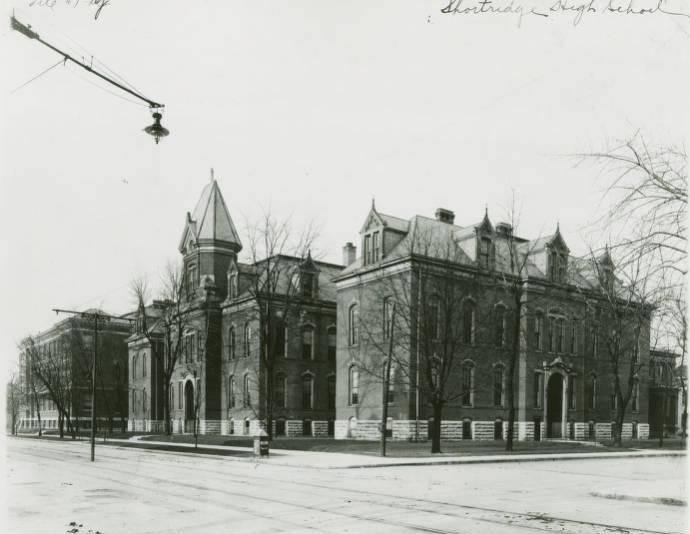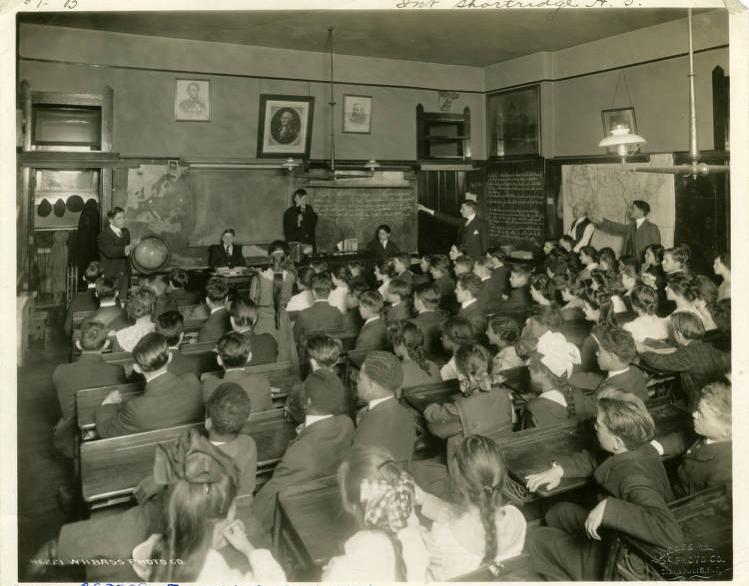Although Indianapolis was served by several private academies in the first half of the 19th century, public funding for a high school did not become available until 1853. Classes were held in the old County Seminary building in University Square, with approximately 150 students attending. There were slightly more boys than girls, a majority that would not recur until near the end of the century.

Closed in 1858 when the Indiana Supreme Court, in declared local taxation for schools to be unconstitutional, Indianapolis High School was not reopened for full terms until became superintendent of schools in 1863. From that point, it experienced steady growth, moving into the former Baptist Female Seminary building at Michigan and Pennsylvania streets, later razing and rebuilding at that site, and, in 1928, moving to a new location at 34th and Meridian streets.
In 1897, as a result of the recent construction of a second high school, on the southside, Indianapolis High School was renamed in honor of Shortridge. By then, Shortridge had developed a national reputation for academic excellence and innovation. It offered many extracurricular activities, including an early version of student government and the nation’s first daily student newspaper, the Shortridge Daily Echo. “To publish a daily paper in a High School is a very dangerous undertaking… [and] has never been done before,” the editorial team wrote on its first day in print. “However,” they continued, “if any high School is capable, it is… [ours], and with that faith in its ability, we have commenced publication.”

While Shortridge had incorporated a manual training department into its curriculum in the 1880s, vocational education was relegated to other city high schools, particularly Manual High School and, later, .
This determination to remain the most “academic” was reinforced throughout the first half of the twentieth century. Although and in 1957 ranked Shortridge among 38 high schools of distinguished merit, by the 1960s shifting demographics, notably a decrease in white students, had caused some alumni and members of the school board to fear an erosion of academic standards and the creation of another all-Black high school.
In reaction to this situation, the Shortridge Plan, passed in 1964 and spearheaded by then board president , made the high school selective based on teacher ratings, intellectual ability, and achievement records of the students. The organizing concept was homogeneous grouping or tracking, with vocational students and those “eligible” for special classes bused to other sites.
This attempt to emphasize an academic rather than a more comprehensive curriculum was consistent with the school’s history. The result, however, was more a partial shifting of non-white students to surrounding high schools than an influx of white students from other districts. Ultimately, the Shortridge Plan failed and its enrollments dwindled, as they had citywide.
Shortridge closed in 1981 but was reopened in 1984, following some renovations to the site, as a middle school. It was not until 2009 that 9th –12th graders were introduced back to the school in the form of a magnet program focused on law. While this magnet program shifted to Arsenal Tech in 2015, a restructuring of Indianapolis Public Schools in 2018 re-centered Shortridge as one of the school district’s four key high schools. The school serves as the district’s World International Baccalaureate school.

Help improve this entry
Contribute information, offer corrections, suggest images.
You can also recommend new entries related to this topic.